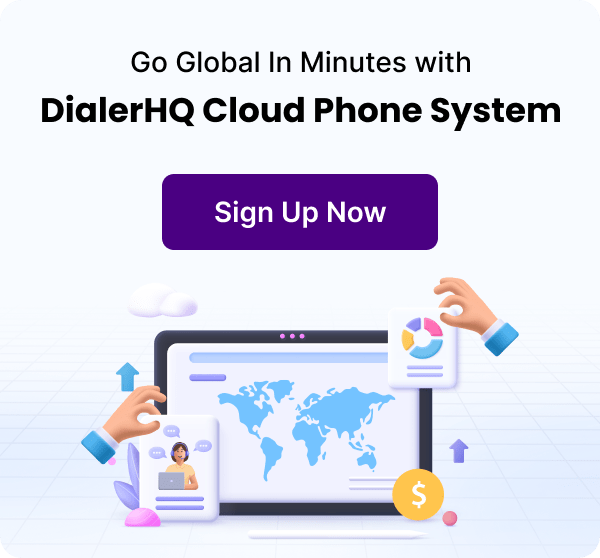Senior Writer: Rohit Rajpal
In a time when customers expect seamless and efficient service, businesses must prioritize First Call Resolution (FCR). FCR is a crucial metric in the realm of customer service, and its significance cannot be overstated. This blog will delve into the concept of First Call Resolution, explaining its importance and providing insights into how it can be measured along with other success metrics.
What is First Call Resolution (FCR)?
First Call Resolution, often abbreviated as FCR, is a metric used to measure the effectiveness of a company’s customer support or service department. Simply put, it gauges whether a customer’s inquiry or issue was resolved during their initial contact with a customer service representative without requiring further follow-up calls, emails, or escalations.
The formula for calculating FCR is relatively straightforward –
FCR (%) = (Number of cases resolved on the first call / Total number of cases) x 100
A high FCR percentage implies that the majority of customer issues are resolved during the first interaction, indicating a streamlined and efficient customer support process.

"To improve First Call Resolution rates, invest in continuous training for your support team, empower them with robust knowledge resources, and regularly monitor performance metrics to identify areas for improvement. Remember that a good First Call Resolution rate not only reduces operational costs but also enhances customer satisfaction and loyalty, making it a key metric for long-term business success."
Why is First Call Resolution Important?
First Call Resolution (FCR) is highly crucial in customer service. It means solving a customer’s problem right when they first contact you, like in one phone call or chat. This is a big deal because it makes customers really happy.
When customers are happy, they stick with your company and tell others good things about it. Also, FCR call center helps save money because you don’t need lots of follow-up calls or emails. It’s a time-saver too, making things faster for customers and the people helping them. So, if a company does FCR well, it makes customers stay, saves money, and is more efficient. That’s why FCR matters a lot in business.
How to Measure FCR and Other Success Metrics?
Measuring First Call Resolution (FCR) and other success metrics is crucial for any business looking to provide excellent customer service and improve its operations. Let’s dive into the details of how to measure first time resolution and some other important success metrics.

Measuring First Call Resolution (FCR)
1. Define FCR for Your Business
The first step is to clearly define what “resolved” means in your specific context. For example, in a technical support setting, it may mean that the customer’s issue is completely fixed. In a sales environment, it might mean that the customer’s questions are answered comprehensively.
2. Gather Data
Collect data on customer interactions. Use Customer Relationship Management (CRM) software or call center systems to track whether customer issues are resolved during the initial contact or if they require further follow-up.
3. Use the FCR Formula
Calculate FCR using the following formula:
FCR (%) = (Number of cases resolved on the first call / Total number of cases) x 100
This formula will give you the percentage of cases that were resolved on the first call. Regularly update this metric to monitor improvements or identify areas that need attention.
4. Monitor Call Quality
Alongside FCR, assess call quality. Analyze customer feedback, listen to call recordings, and use post-interaction surveys to gather insights into the overall customer experience. This helps in understanding the qualitative aspect of FCR.
You May Also Read : What is Call Monitoring?
5. Set FCR Targets
Establish realistic FCR targets for your organization. These targets should be based on industry benchmarks, customer expectations, and historical performance. Aim for continuous improvement while ensuring your targets are attainable.
6. Root Cause Analysis
For cases that don’t achieve FCR, conduct a root cause analysis. Identify common issues, training gaps, or process bottlenecks that hinder FCR and take corrective actions to address them. This analysis helps in making systematic improvements.
7. Employee Training
Ensure that your customer service representatives receive adequate training to handle a wide range of customer issues effectively. Continuous training and skill development are essential for improving FCR rates.
8. Feedback Loop
Encourage your agents to provide feedback on customer issues and suggest potential process improvements. Creating a closed feedback loop helps in fine-tuning operations and addressing issues proactively.
Other Success Metrics to Consider
While FCR is a critical success metric, it’s not the only one to focus on. Here are some other important metrics to consider –

1. Average Handle Time (AHT)
AHT measures the average time it takes for an agent to resolve a customer issue. Monitoring AHT helps in optimizing efficiency without compromising the quality of service.
2. Customer Satisfaction Score (CSAT)
CSAT is a direct measure of customer satisfaction. It’s typically measured through CSAT surveys where customers rate their experience. Aim for high customer satisfaction scores (CSAT) as an indicator of customer happiness.
3. Net Promoter Score (NPS)
NPS measures customer loyalty and willingness to recommend your company to others. It’s often gathered through the “How likely are you to recommend us to a friend?” question. A high NPS signifies strong customer advocacy.
Measuring FCR and other success metrics is essential for businesses aiming to provide exceptional customer service and continuously improve their processes. By regularly assessing these metrics, companies can identify areas for enhancement, enhance customer satisfaction, and maintain a competitive edge in their respective industries.
The Benefits of First Call Resolution
First Call Resolution (FCR) is more than just a metric; it’s a cornerstone of exceptional customer service. Let’s explore the myriad benefits of achieving high FCR rates and why businesses should prioritize this essential aspect of customer support.

1. Enhanced Customer Satisfaction
Perhaps the most significant benefit of FCR is its direct impact on customer satisfaction. When customers contact a support center with an issue, they seek a quick and effective resolution. Achieving FCR means resolving their problems in a single interaction. This not only makes customers happy but also increases their trust and loyalty to the company.
You May Also Read : Get a Virtual Phone System
2. Cost Savings
FCR can significantly reduce operational costs. When issues are resolved in the first contact, there’s no need for additional follow-up calls, emails, or escalations. Fewer interactions mean less time and resources spent, resulting in cost savings for the business.
3. Improved Operational Efficiency
Efficient FCR processes save time for both customers and customer service representatives. Customers don’t have to spend unnecessary time on the phone or chat, and agents can handle a larger volume of inquiries. This leads to improved productivity and resource allocation.
4. Stronger Brand Reputation

Companies that consistently achieve high FCR rates are seen as more reliable and customer-focused. A positive reputation attracts new customers and retains existing ones, fostering long-term business success.
5. Reduced Customer Churn
High FCR rates contribute to lower customer churn. When customers have positive experiences and their issues are resolved swiftly, they are less likely to switch to competitors. Reducing churn is critical for maintaining a stable customer base and revenue stream.
6. Increased Employee Morale
FCR isn’t just beneficial for customers; it’s also a morale booster for customer service team members. When agents can resolve issues effectively and see satisfied customers, it boosts their confidence and job satisfaction. Happy employees are more likely to provide excellent service consistently.
Best Practices to Improve First Call Resolution Rates
Now that we’ve explored the benefits, let’s delve into best practices to enhance FCR rates and deliver exceptional customer service.

1. Comprehensive Training
Ensure that your customer service representatives receive comprehensive training. Equip them with the knowledge and skills needed to address a wide range of customer issues effectively. Continuous training and skill development are essential.
2. Effective Knowledge Base
Create and maintain a robust knowledge base that agents can reference during customer interactions. This resource should contain up-to-date information, troubleshooting guides, and frequently asked questions to aid in issue resolution.
3. Empower Agents
Empower agents to make decisions and resolve issues autonomously whenever possible. Encourage them to take ownership of customer problems and provide solutions without the need for multiple handoffs or approvals.
4. Invest in Technology

Utilize advanced customer service technology, such as CRM systems, chatbots, and artificial intelligence, to streamline processes and assist agents in issue resolution. These tools can provide valuable insights and automate routine tasks.
5. Monitor and Measure
Regularly monitor FCR rates and other related metrics. Identify areas where FCR is low and conduct root cause analyses to uncover underlying issues. Use these insights to make data-driven improvements.
6. Feedback Mechanisms
Create a feedback loop where agents can provide insights into customer issues and suggest process improvements. Agents’ firsthand experiences can be invaluable in fine-tuning operations.
Conclusion
First Call Resolution is a cornerstone of exceptional customer service, offering numerous benefits such as increased customer satisfaction, cost savings, and improved brand reputation. By implementing best practices, businesses can enhance FCR rates, provide outstanding customer support, and achieve long-term success in a competitive market.
Frequently Asked Questions
The purpose of First Call Resolution (FCR) is to resolve customer issues or inquiries during their initial contact with customer support, ensuring swift and efficient problem resolution.
Several factors affect FCR, including agent training, access to information, effective processes, and the complexity of customer issues.
A good FCR rate is typically considered to be around 70% or higher. However, the ideal rate may vary depending on industry standards and customer expectations.
The average FCR rate varies by industry but is generally around 60-70%. Some industries with more complex issues may have lower rates, while others, like retail, may achieve higher rates.
Yes, First Call Resolution is a Key Performance Indicator (KPI) used to measure the effectiveness of customer service operations.
Factors affecting FCR include agent training, access to information, effective processes, customer issue complexity, and the quality of support technology.
Rohit Rajpal simplifies intricate technical ideas into practical insights through his articles and publications. His journey in VoIP and cloud telephony reflects a profound grasp of the evolving landscape, a flair for innovation, and a dedication to creating user-friendly blogs. Rohit’s broad expertise encompasses VoIP protocols, codecs, and cloud-based telephony systems, ensuring accessible knowledge for all.
Updated : December 16, 2024

Subscribe to our newsletter & never miss our latest news and promotions.





